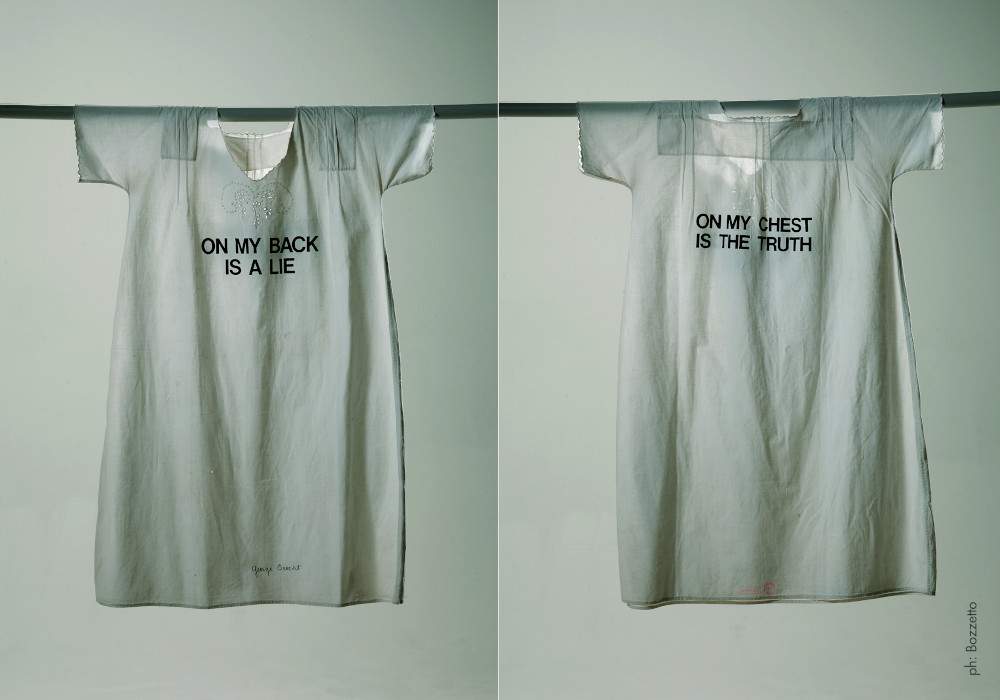Opening November 25, 2022, and open until April 16, 2023, at the Archives Space of the Museo del Novecento in Milan, the exhibition Fluxus, art for all. Italian Editions from the Luigi Bonotto Collection, curated by Patrizio Peterlini and Martina Corgnati, in collaboration with the Bonotto Foundation. Sixty years after the FLuXuS Internationale FesTsPiELe NEUEsTER MUSiK Festival in Wiesbaden in September 1962, the exhibition aims for the first time to analyze through publications, works and documents Italy’s key role in Fluxus.
This is the third event that closes the cycle dedicated to Fluxus by the Bonotto Foundation in its ten years of activity. Each exhibition has addressed a specific theme for the movement’s experience: artist’s books, the protagonists of Fluxbooks organized in Venice in 2015 in collaboration with the Fondazione Bevilacqua La Masa, and music, with a large collection of Fluxus scores, records and musical instruments, the focus of the second exhibition Sense Sound at the Auditorium Parco della Musica in Rome in 2016 and Whitechapel in London in 2019. The third and final stage, at the Museo del Novecento in Milan, puts the focus for the first time on theItalian publishing experience and theactivity of its protagonists: Rosanna Chiessi, who founded Pari&Dispari edizioni in 1971; Francesco Conz, whose editions began in 1972; Gino Di Maggio, Beppe Morra and the historic ED 912 editions animated by Gianni Emilio Simonetti and Daniela Palazzoli.
The Fluxus movement was born in the late 1950s and early 1960s thanks to artist, architect and cultural organizer George Maciunas, spreading particularly in the United States, Europe and Japan. It initiated a true aesthetic and social revolution intended to intertwine visual and performing arts, experimental music and theater, with the creation of festivals, happenings and concerts aimed at eliminating the division in the arts.
Italy also participated significantly in the spread of Fluxus, particularly with experiences in the production of"editions": objects, folders of graphics, and artist’s books in several copies. These are works made by patrons and cultural workers together with the protagonists of the movement, such as Eric Andersen, Joseph Beuys, George Brecht, Giuseppe Chiari, Philip Corner, Geoffrey Hendricks, Allan Kaprow, George Maciunas, Nam June Paik, Ben Patterson, Dieter Roth, Wolf Vostell, Bob Watts and many others.
Strengths of making the editions are low production costs, ease of distribution (including by mail), and accessibility to the general public through inexpensive prices. Features that fully respond to the idea of democratization of art on which Fluxus is based. Indeed, in the second manifesto of 1963, Maciunas speaks of a Revolutionary Flood that would make art accessible and understandable to all, with a direct and unmediated attack on the market system. A myriad of small objects that can go anywhere, bringing with them the new aesthetic vision of the world.
The multiples and numerous editions in the exhibition, from the Luigi Bonotto Collection, explore the radical change that the diffusion of editions brings to the dissemination of the work of art in the Fluxus world. From an elite object, intended for a small circle of wealthy connoisseurs, thework becomes a cheap object, accessible and purchasable by anyone, often accompanied by an"instruction manual" for an action to be performed at home. So not only can any object be elevated to art, but anyone can make this transition, without necessarily needing official recognition.
On display are editions by Eric Andersen, Ay-O, Joseph Beuys, George Brecht, John Cage, Giuseppe Chiari, Philip Corner, Willem De Ridder, Jean Dupuy, Robert Filliou, Albert M. Fine, Henry Flynt, Ken Friedman, Al Hansen, Geoffrey Hendricks, Dick Higgins, Joe Jones, Allan Kaprow, Milan Knizak, Alison Knowles, Jackson Mac Low, George Maciunas, Walter Marchetti, Jonas Mekas, Larry Miller, Charlotte Moorman, Claes Oldenburg, Yoko Ono, Nam June Paik, Ben Patterson, Dieter Roth, Takako Saito, Tomas Schmit, Carolee Schneemann, Mieko Shiomi, Gianni-Emilio Simonetti, Daniel Spoerri, Ben Vautier, Wolf Vostell, Robert Watts, Emmett Williams, and others.
Since the early 1970s, the Bonotto Collection has collected numerous testimonies including works, audio documentations, videos, posters, books, magazines and editions of Fluxus artists and international verbo-visual researches developed since the late 1950s: Lettrism, Concrete Poetry, Visual Poetry, Sound Poetry and Digital Poetry. The entire collection (works and documents) is fully and freely available online at the Bonotto Foundation website.
For info: https://www.museodelnovecento.org/
Image: George Brecht, The paradox shirt (1977), 1989
 |
| Fluxus, art for all. In Milan, the exhibition that analyzes how Italy contributed to its spread |
Warning: the translation into English of the original Italian article was created using automatic tools. We undertake to review all articles, but we do not guarantee the total absence of inaccuracies in the translation due to the program. You can find the original by clicking on the ITA button. If you find any mistake,please contact us.